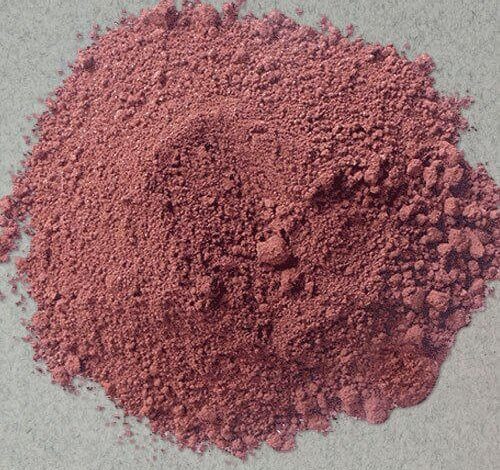Large Resources, Natural Formation, and Industrial Uses
The Global Importance of Hematite
Hematite (Fe₂O₃) is a naturally occurring iron oxide mineral and one of the most abundant sources of iron in the world. It plays a crucial role in steel production, industrial manufacturing, and environmental applications.

With large hematite reserves found across different continents, this mineral remains a cornerstone of modern industry. Therefore, this article explores major hematite resources, its natural formation process, and its diverse industrial and commercial applications.
Large Hematite Resources Around the World
Hematite is one of the most widely distributed iron ores, found in vast quantities across several continents. Moreover, the largest deposits are located in:
-
Australia – The Leading Hematite Producer
Australia has the world’s largest hematite reserves, primarily in the Pilbara region of Western Australia. Major mining companies such as BHP, Rio Tinto, and Fortescue Metals Group extract high-grade hematite ore, which they export globally. As a result, Australia dominates the seaborne iron ore trade. -
Brazil – Rich in High-Grade Hematite
Brazil is another major hematite supplier, with significant reserves in Minas Gerais. Because the country’s iron ore contains more than 60% iron, it is a preferred material for steel production. -
India – An Emerging Hematite Supplier
India has vast hematite resources, mainly in Odisha, Jharkhand, and Chhattisgarh. These deposits supply the country’s steel industry and contribute to global exports. In addition, India continues to invest in new mining infrastructure. -
China – The Largest Iron Ore Consumer
China holds significant hematite reserves but still imports large quantities from Australia and Brazil due to its huge steel and construction demands. Consequently, China is both a major producer and the largest global buyer. -
Canada and the United States – Expanding Hematite Mining
North America contains substantial hematite deposits, particularly in Quebec (Canada) and Minnesota (USA). Mining operations here directly support steel production and infrastructure development.
How Hematite Forms in Nature
Hematite forms in several geological environments over millions of years. The primary formation processes include:
-
Sedimentary Formation
Most hematite deposits develop in ancient sedimentary settings where iron-rich minerals accumulate and undergo chemical changes. These banded iron formations (BIFs) appear prominently in Australia and Brazil. -
Magmatic and Hydrothermal Formation
In some regions, magmatic and hydrothermal processes deposit hematite in fractures and cavities within rocks. For example, volcanic regions often contain high-purity hematite veins. -
Weathering and Oxidation
In tropical and subtropical climates, hematite forms when iron-bearing minerals such as magnetite oxidize. This process creates red and brown hematite-rich soils, especially in India and Africa.
Industrial Uses of Hematite
Hematite’s high iron concentration, density, and chemical stability make it invaluable in heavy industries.
-
Steel Production – The Primary Use
Hematite is the main iron ore used in steel manufacturing. The process involves:
-
Extracting pure iron from ore
-
Smelting in blast furnaces
-
Refining into steel for construction, automotive, and industrial applications
Thus, as global steel demand rises, hematite remains essential for infrastructure growth.
-
Pigments and Paints
Hematite’s natural hues—red, brown, and black—make it useful in paints, ceramic glazes, and construction materials. In fact, it has been used as a pigment for thousands of years. -
Heavy Media Separation in Mining
Its high density enables efficient separation of valuable ores from waste rock in mineral processing and coal washing. -
Water Treatment and Environmental Protection
Hematite filters heavy metals from wastewater, neutralizes acid mine drainage, and reduces industrial pollutants. Moreover, it serves as an eco-friendly alternative to synthetic chemicals. -
Radiation Shielding
Due to its density, hematite is incorporated into nuclear reactor shielding, medical equipment protection, and aerospace materials. -
Cement and Construction
It strengthens cement, improves heat resistance, and increases durability in flooring and fireproof structures.
Commercial Uses of Hematite
Beyond heavy industry, hematite appears in jewelry, cosmetics, and decorative arts.
-
Jewelry and Decorative Items
Hematite’s metallic luster enhances necklaces, rings, and sculptures. -
Cosmetics and Skincare
Finely ground hematite adds natural pigment to mineral makeup and acts as an exfoliant in skincare products. -
Magnetic Healing and Wellness
Some believe hematite has energy-balancing properties, making it popular in alternative wellness products. -
Glass and Ceramics
Hematite adds color, durability, and heat resistance to glass and ceramic products. -
Art and Craft Materials
Artists use hematite pigments for paints, glazes, and metallic coatings.
Why Hematite is a Preferred Industrial and Commercial Material
-
High Iron Content and Efficiency
With up to 70% iron, hematite is easier to process than other ores, lowering production costs. -
Environmentally Friendly and Sustainable
It can be recycled in multiple industries and supports eco-friendly water purification. -
Cost-Effective and Widely Available
Because it is abundant in major mining regions, hematite remains affordable for large-scale industrial use.
In summary, hematite’s abundance, high iron content, and versatility make it one of the most valuable minerals in both industrial and commercial sectors. Therefore, its role in steel production, environmental protection, and consumer goods will remain strong for decades to come.

